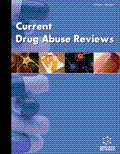Abstract
There is now compelling evidence that the excitatory amino acid neurotransmitter glutamate plays a pivotal role in drug addiction and alcoholism. As a result, there has been increasing interest in developing glutamate-based therapies for the treatment of addictive disorders. Receptors for glutamate are primarily divided into two classes: ionotropic glutamate receptors (iGluRs) that mediate fast excitatory glutamate transmission, and metabotropic glutamate receptors (mGluRs), which are G-protein coupled receptors that mediate slower, modulatory glutamate transmission. Most iGluR antagonists, while showing some efficacy in animal models of addiction, exhibit serious side effects when tested in humans. mGluR ligands, on the other hand, which have been advanced to testing in clinical trials for various medical conditions, have demonstrated the ability to reduce drug reward, reinforcement, and relapse-like behaviors in animal studies. mGluR ligands that have been shown to be primarily effective are Group I (mGluR1 and mGluR5) negative allosteric modulators and Group II (mGluR2 and mGluR3) orthosteric presynaptic autoreceptor agonists. In this review, we will summarize findings from animal studies suggesting that these mGluR ligands may be of potential benefit in reducing ongoing drug self-administration and may aid in the prevention of relapse. The neuroanatomical distribution of mGluR1, mGluR2/3, and mGluR5 receptors and the pharmacological properties of Group I negative allosteric modulators and Group II agonists will also be overviewed. Finally, we will discuss the current status of mGluR ligands in human clinical trials.
Keywords: Metabotropic glutamate receptor, negative allosteric modulator, addiction, alcoholism, rodent models, selfadministration, conditioned place preference, reinstatement, relapse
 44
44















